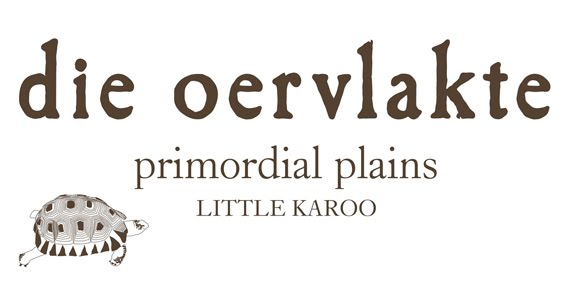“Standing on the Ancient African Surface, one is immediately aware that the surface is covered in pebbles of different sizes, patterns and colours. On closer inspection many appear to have been formed by eons of wind and water abrasions, some seem to be miniature conglomerates and others just pretty stones, but one is overwhelmed by the geological time of the place. Looking down the valley more hills with their thick duricrust tops can be seen, all capped at the same height – giving a glimpse into the millions of years of erosion, accumulation, sediments, dry periods and wet periods of this enchanted, magical place we call the Little Karoo”.
“Another remarkable feature of the area is a series of cliffs and caves. The weather during ancient times was warm and wet, deeply rotting the rocks on the plain. Water and wind weathered the sandstone fragments on the surface of the plain and in time many of them were rounded to pebbles and small boulders, which now lie on the present day surface of die oervlakte. During the formation of this surface, water carried silica and iron derived from the weathering into the rotted rocks below the plain, cementing these into very hard duricrusts. The narrow cliffs seen at the crest of the mesas are the cemented jumble of angular and rounded rock fragments. Soft, rotted rock is located beneath the duricrust. Weathering and erosion of the past few million years has removed the rotted rock and undercut the duricrust, forming caves which are of great significance in the history of land use by nature and man in the Uniondale area.
The view from Uniondale Heights on approaching the town from the north on the N9 is striking, and the three mesas are the first view of note. Erosion, which started with the breakup of the Gondwana super-continent, reduced the land surface to an undulating plain, with the erosion-resistant sandstone and quartzite standing proud of the plain as impressive peaks; the most prominent of which is Mannetjiesberg, at an altitude of 1956 metres, visible to the northwest of the town. A drive along the Uniondale Poort road towards Avontuur reveals the sandstone rocks close up - there are several stopping points where bedding (from when the rocks were laid down) and folding (from the great upheavals the rocks underwent) can be examined”. Dr. Chris Lee
"Uniondale is rich in history and bloodshed. The first settlers to explore this part of the interior trekked through in 1689 under orders from Simon van der Stel. With the interior still largely unknown, and inhabited by the indigenous Inkwa tribe, these first settlers approached this arduous journey apprehensively. According to an old map, Isaac Schrywer and a party of 22 men and two ox wagons visited the region on 1 February 1689, and explored the shores of the Kammanassie River, or t’Kamt’Nasi. The Dutch East India Company often sent exploring parties into the interior, who not only reported back about the conditions of the land and its peoples, but who also traded and bartered stock with the Attaqua, Inkwa and Outeniqua people.
This picturesque town came into being by joining two hamlets (Hopedale and Lyon) in 1865. Before this, the area was visited during various expeditions, while gradually settlers moved in from the west.
Uniondale was, a century ago, the hub of frequent military activity. The Anglo-Boer War saw many soldiers from both sides die on the outskirts of the little village.
The remnant of an old British fort looks down on Uniondale from a nearby hill. This fort was one of four that were built to defend the town against a Boer invasion during the Anglo-Boer War (1899-1902)". Leon Nell
Some historic buildings:
 | |||||
| The Dutch Reformed Church: A new church was built in 1884. |
 |
| This bluegum tree was planted in 1850 to commemorate the first open-air service of the congregation. It stands next to the police station opposite the church. |
 |
| Uniondale was a wagon building town. The wood was brought by ox wagon over the Prince Alfred Pass and then transported from here into the interior. This is the original smithy. |
 |
| The smithy door with some of the cattle brands embedded in it. |
On the outskirts of the town there are still working farms which have been in families for centuries. One of them is the Stewart farm where the sheep are still herded by sheep dogs at the close of day.
The area around Uniondale offers an abundance of unique plants, some found only here.
There is much to experience in this quite Karoo town.
For orders for die oervlakte book contact: Louise Heckl 044 752 1143 |083 861 2209 | exlibris@iburst.co.za










